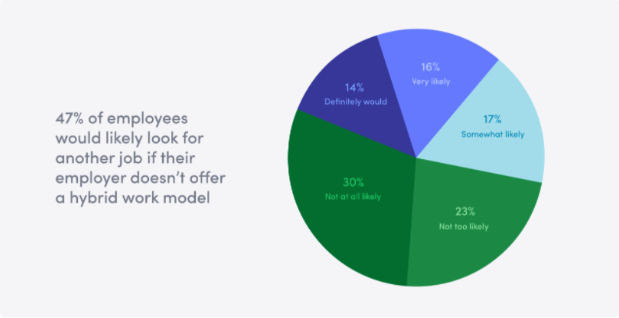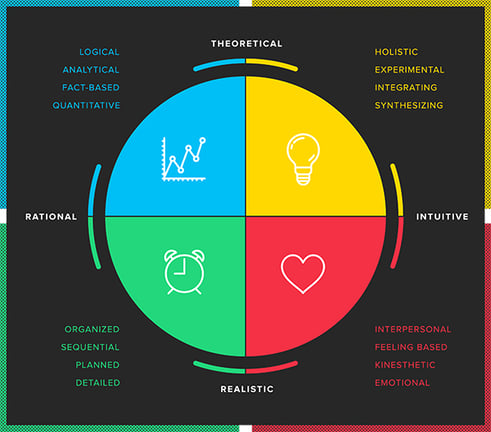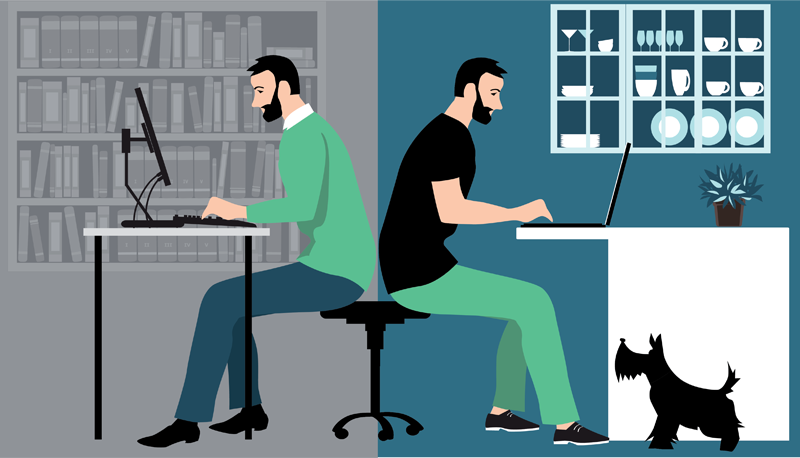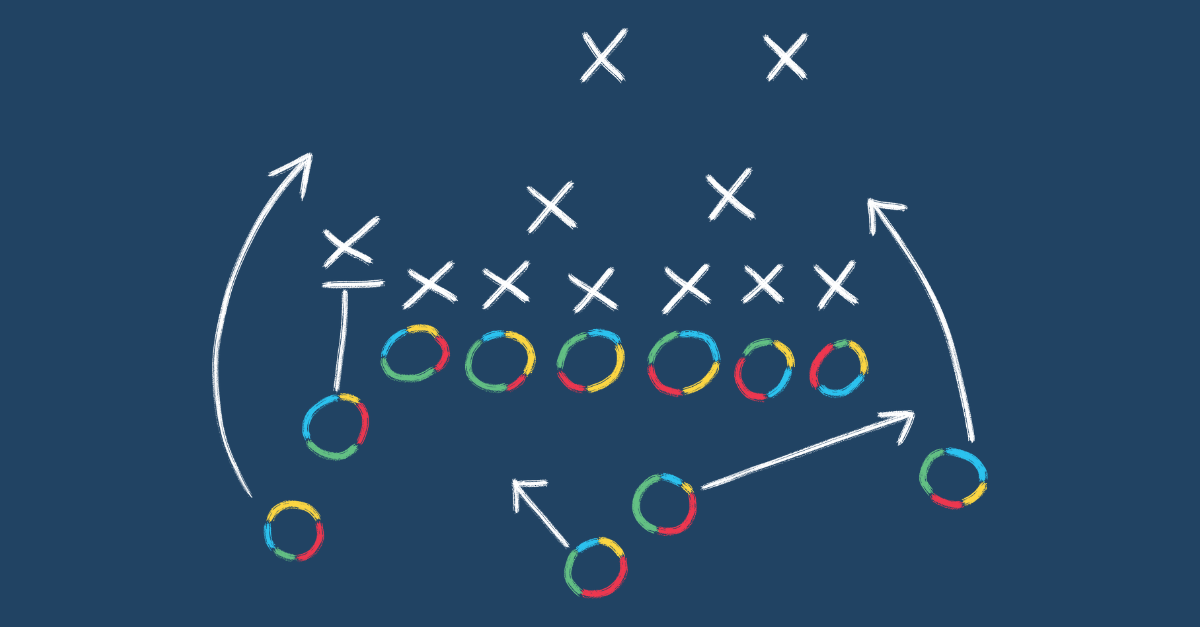It’s true, work will never be the same. It seems like all people are talking about these days is the new shift to hybrid work. Hybrid work can have many variations. Some companies may allow every employee the flexibility to work on-site and remotely part of the week. Other companies might have employees working either full-time remote or full-time onsite, whereas others may offer a combination of the two within a team or division.
The truth is, hybrid working environments aren’t going away and it’s time to rethink the way we work. In a recent podcast, Ann Herrmann-Nehdi, Chair of the Board and Chief Thought Leader at Herrmann, discussed how Whole Brain® Thinking can help us better navigate the hybrid working world.
 Source: https://envoy.com/blog/what-is-a-hybrid-work-model/
Source: https://envoy.com/blog/what-is-a-hybrid-work-model/
She recommends using Whole Brain® Thinking as a process improvement method to diagnose and understand what you need to pay most attention to for the hybrid working model environment to be successful. To operationalize Whole Brain® Thinking you should look at the four key quadrants (figure 1) below and start asking yourself questions that pertain to each quadrant. This model will act as the framework to decode and harness the cognitive diversity of individuals and teams within your organization.
 (Figure 1)
(Figure 1)
![]() What?
What?
The “What” in regards to a hybrid working environment needs to be very clear. Clarity is essential for people to understand the goals. Questions you should be asking include:
- What do we mean by hybrid work?
- What are we expecting in terms of how employees are going to work and interact with others?
- What kind of technology are we going to be using?
- What are the new rules of the road?
![]() How?
How?
- How does our teams processes need to change in order to best suit a hybrid team?
- In what ways can we best share information and stay in touch (i.e. slack, teams, zoom)
- How do we currently structure our time and communication? How can we improve?
- As a leader, how do I avoid the proximity bias?
By applying the Whole Brain® Thinking model and asking yourself these difficult questions upfront, you’ll be able to create an optimal hybrid working environment. Click here to listen to the full podcast, “How Whole-Brain® Thinking Can Help Us Navigate in a Hybrid Working World.
![]() Who?
Who?
The “Who” is all about people. Creating psychological safety for employees by creating a space where people feel safe is paramount. Trusting people means that you’re focusing on outcomes versus activities. A lot of managers have been focused on activities and not outcomes. Ann stated that, she likes to “encourage managers to offer direction, not directions. This, in turn, makes sure that people understand that they're trusted to get the work done, whether they're working remotely or whether they're in the office. It's about trust, and then letting them figure out the “how” in terms of how they're actually going to do something is so important.”
Google’s People Operations, or what they call their Human Resources Department set out to answer the question, What makes a Google team effective? Using data and rigorous analysis, they came to the conclusion that there are five key dynamics that set teams apart. The #1 contributing factor is psychological safety. By building a safe space it also helps to build a culture of inclusion which is extremely important in terms of a hybrid model. It’s important for people to know where they fit and that they really belong.
![]() Why?
Why?
The “Why” is all about an employee's work and the meaning of their work. Employees will want to know how they can continue to achieve their same goals within a hybrid environment. Based on Gallup, 60% of people aren’t even aligned on the real purpose of their company. The new hybrid movement is a chance to get people aligned by asking the question, “What are we here to do, and how does that connect to me?”
Learn More About Hybrid Work
Want to learn more about how you can be successful in a hybrid working environment? Check out our remote collaboration team activities that lead remote teams through three reusable interactive games as a way to improve remote collaboration within the team and between team members by raising awareness of cognitive diversity.
Join the New Journey
Want to learn more and try out the new new self-paced micro-learning journey? It helps accelerate the rollout of Whole Brain® Thinking to hybrid and remote workforces easily. Schedule time with your dedicated client success manager and get started with experiencing the impact of Whole Brain® Thinking at scale.












